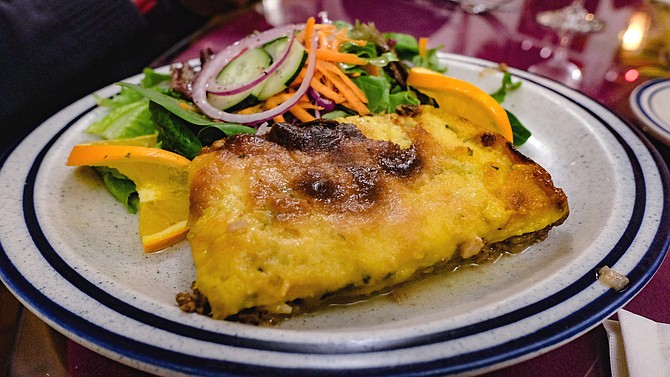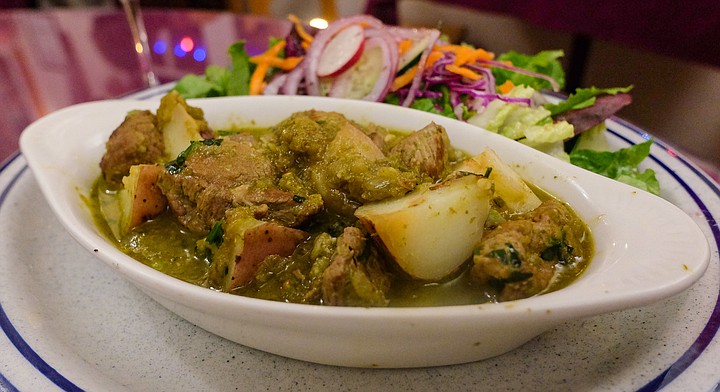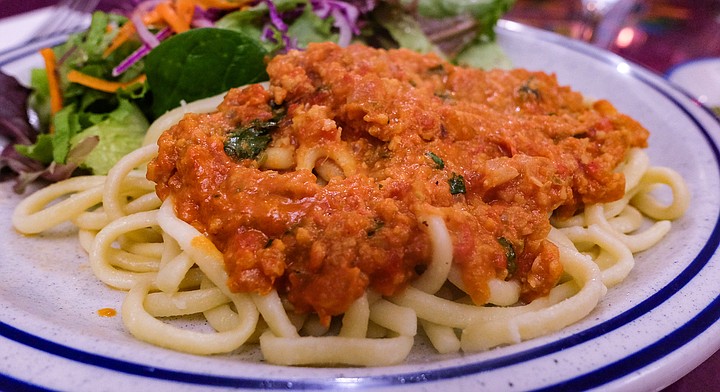 Facebook
Facebook
 X
X
 Instagram
Instagram
 TikTok
TikTok
 Youtube
Youtube

Fun fact: the State Department has still been issuing passports during the federal government’s partial shutdown. For this, I am grateful. My renewed documents arrived this week, prompting the return of a favorite hobby: studying maps to imagine where in the world I’d like to travel next. The list of nations runs long, and I know I’ll never reach them all, so I usually rank according to appetite: What will I eat when I get there?
In this regard, local restaurants prove hugely influential to my decision-making, which explains why one region of Mexico or another always figures prominently in my fantasy travel planning. But on the whole, my understanding of South American food has been limited to empanadas, grilled meat, and ceviche. I know there’s got to be more to it.
Fortunately, Berta’s Latin Cuisine can fill in a few gaps.
For going on three decades, Berta’s has quietly delivered Pan-American dishes within a homey dining room in Old Town. It’s easy to miss, between the bevy of tourist-trap Mexican spots peppering the historic park, and the louder presence of Rockin Baja Lobster next door, but in-the-know locals tend to become loyal customers.

The namesake Berta hails from Chile, making this perhaps the only place in town to score Chilean food. However, the menu provides dishes spanning continents, so entrees are named according to nation of origin. You’ll find Venezuelan Arepas, Guatemalan Shrimp, Mexican Mole Poblano, and Spanish Paella.
From Peru, there’s Seco de Cordero, a stew of lamb and potatoes cooked in orange and lemon juice, served with peas and cilantro. The citrus seem to tenderize the lamb as much as flavor the hearty dish, which owes much to chili spice and earthy notes such as cumin. I enjoy the creative ceviches and rotisserie chicken I’ve tried in local Peruvian restaurants, but it’s gratifying to get acquainted with something a little different from the northern Andes region.
I tried another surprising deviation from my awareness of Brazilian cuisine, courtesy of the Tallarines Vatapa. Tallarines means noodles, and the noodles in this dish were thick as udon noodles. Whereas every Brazilian meal I’ve eaten prior to this one featured meat, front and center, this Vatapa is actually a vegan dish, its thick sauce composed of peanuts, shredded coconut, coconut milk, ginger, and chilies. It’s sweet, complex, and entirely unlike any pasta dish I’ve ever eaten. If you’re into it, Berta’s features the same sauce in a seafood dish, without the pasta.

The must-try dish here, though, is called Pastel de Choclo. My Chilean waiter described it as a special occasion meal, wherein family members take on different tasks in its preparation. One might be in charge of the sweet corn that gives it the choclo descriptor, while others may ready the onions, olives, raisins, eggs, ground beef, or chicken.
Pastel means cake or pastry, but as the ingredients list suggests, there’s a lot more involved here than what we conventionally think of as cake. The eggy baked casserole sits somewhere between a quiche and shepherd’s pie, combining sweet, savory, and spicy components. Each bite reminded me how little I know about Chilean food and culture, and therefore how much there remains to find out.
Which can only mean one thing: add Chile to the list. Italy can wait.


Fun fact: the State Department has still been issuing passports during the federal government’s partial shutdown. For this, I am grateful. My renewed documents arrived this week, prompting the return of a favorite hobby: studying maps to imagine where in the world I’d like to travel next. The list of nations runs long, and I know I’ll never reach them all, so I usually rank according to appetite: What will I eat when I get there?
In this regard, local restaurants prove hugely influential to my decision-making, which explains why one region of Mexico or another always figures prominently in my fantasy travel planning. But on the whole, my understanding of South American food has been limited to empanadas, grilled meat, and ceviche. I know there’s got to be more to it.
Fortunately, Berta’s Latin Cuisine can fill in a few gaps.
For going on three decades, Berta’s has quietly delivered Pan-American dishes within a homey dining room in Old Town. It’s easy to miss, between the bevy of tourist-trap Mexican spots peppering the historic park, and the louder presence of Rockin Baja Lobster next door, but in-the-know locals tend to become loyal customers.

The namesake Berta hails from Chile, making this perhaps the only place in town to score Chilean food. However, the menu provides dishes spanning continents, so entrees are named according to nation of origin. You’ll find Venezuelan Arepas, Guatemalan Shrimp, Mexican Mole Poblano, and Spanish Paella.
From Peru, there’s Seco de Cordero, a stew of lamb and potatoes cooked in orange and lemon juice, served with peas and cilantro. The citrus seem to tenderize the lamb as much as flavor the hearty dish, which owes much to chili spice and earthy notes such as cumin. I enjoy the creative ceviches and rotisserie chicken I’ve tried in local Peruvian restaurants, but it’s gratifying to get acquainted with something a little different from the northern Andes region.
I tried another surprising deviation from my awareness of Brazilian cuisine, courtesy of the Tallarines Vatapa. Tallarines means noodles, and the noodles in this dish were thick as udon noodles. Whereas every Brazilian meal I’ve eaten prior to this one featured meat, front and center, this Vatapa is actually a vegan dish, its thick sauce composed of peanuts, shredded coconut, coconut milk, ginger, and chilies. It’s sweet, complex, and entirely unlike any pasta dish I’ve ever eaten. If you’re into it, Berta’s features the same sauce in a seafood dish, without the pasta.

The must-try dish here, though, is called Pastel de Choclo. My Chilean waiter described it as a special occasion meal, wherein family members take on different tasks in its preparation. One might be in charge of the sweet corn that gives it the choclo descriptor, while others may ready the onions, olives, raisins, eggs, ground beef, or chicken.
Pastel means cake or pastry, but as the ingredients list suggests, there’s a lot more involved here than what we conventionally think of as cake. The eggy baked casserole sits somewhere between a quiche and shepherd’s pie, combining sweet, savory, and spicy components. Each bite reminded me how little I know about Chilean food and culture, and therefore how much there remains to find out.
Which can only mean one thing: add Chile to the list. Italy can wait.
Comments